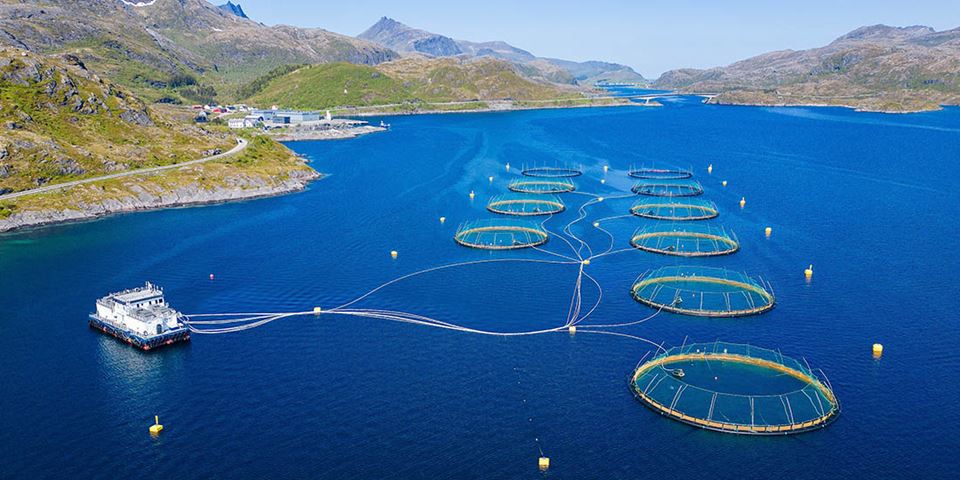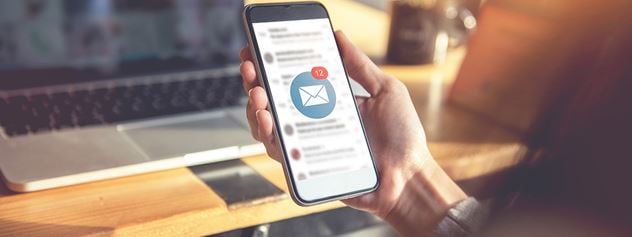The fastest growing production of animal protein in the world is happening in the aquaculture sector. By 2030, two-thirds of all seafood will come from fish farms, according to UN estimates.
But for sustainability, the salmon industry needs a feed revolution now – and that will require major investments.
Some of the most relevant new feed technologies will also need increased access to electricity.
One of two social missions
Norway’s government has stated that all feed for farmed fish and livestock must come from sustainable sources by 2034. The declaration came in August when sustainable feed was defined as one of Norway’s two social missions.
Social missions are Norway’s answer to the EU Missions that support ambitious innovation and knowledge initiatives to solve complex societal challenges.
- You might also like: How scientists will prevent plastic pollution in the ocean
Two million tonnes of feed a year
Aquaculture is Norway’s second largest export industry. Recently, the Norwegian Seafood Council presented record figures indicating exports of EUR 15 billion in 2024. The salmon stock that gave us these values requires two million tonnes of feed annually.
Protein accounts for 700 000 tonnes of the total feed need.
Sourcing more sustainable raw materials
Norway currently imports over 90 percent of the raw materials in salmon feed. A high proportion of this is soy, which could be human food. Now politicians want to change this.
In formulating the social mission, the government has said that by 2034, 25 percent of the raw materials in the feed for Norwegian salmon should be from Norway, as well as sustainably sourced.
Based on previous SINTEF and Bellona studies, SINTEF researchers have now assessed how much sustainable feed can be harvested in Norway up to 2034. Our results are clear: Using available biomass from the sea and land will not provide enough feed to meet the 25 percent target.
Adding cultivated feed sources like insects and shellfish will not help either.
Fermentation plant the next step
If the 25 percent target is to be reached, we need to build up a fermentation industry that provides protein by mass-producing microorganisms.
Producing salmon feed by harvesting existing biomass – using everything from slaughter waste and kelp to grass and beans – is theoretically possible.
If Norway manages to do this, we assume that such sources could provide 700 000 tonnes of salmon feed with and without protein. This information is important to note when we look farther ahead toward 2050.
All of these options must succeed for Norway to achieve this production volume, which is only slightly more than a third of the feed amount that the current stock of salmon eats.
Traditional sources have limitations
The possibilities for harvesting and utilizing most traditional raw material sources today have several limitations, however. Several methods are still only available on a laboratory scale, and other fishing techniques are still being developed.
This means that the protein contribution we can generate from these sources by 2034 is very limited. The only exceptions so far are the harvesting of zooplankton and increased utilization of waste products from the fishing and slaughtering industry.
New thinking is needed
Traditional thinking will not achieve the government’s target of 25 percent self-sufficiency by 2034. Harvesting the existing biomass alone is not enough.
Norway has both the expertise and the capital required to build up the additional supply line we will need. That is, fermentation plants that can mass-produce new protein-containing cells by cultivating microorganisms on raw materials that are not used as feed today.
Promising projects are underway in this field, both at home and abroad.
Variant of nature’s own photosynthesis
Some of these projects involve creating a variant of nature’s own photosynthesis, using reactors that supply microorganisms with carbon from captured CO2, and replacing sunlight with green hydrogen as an energy source.
Supplying CO2 and hydrogen allows microorganism cultures to grow rapidly. One input factor in these processes is the need for significant amounts of electricity to obtain hydrogen. These methods also need to be scaled up before we can make industrial use of them.
The challenge of scaling up and accessing power also applies to other new ways of producing the raw materials for feed.
- You might also like: Here you can watch a sea cucumber sensation
Industrial expansion in line with offshore wind and battery factories
Combining the harvesting of existing biomass with fermentation will probably require investments ranging from EURO 1.7 to 3.4 billion to meet the 25 percent target. We are talking about an industrial revolution on par with developing offshore wind or establishing battery factories.
The debate about which industries we should use Norway’s power resources for is already in full swing. We will not be able to fulfil everyone’s wishes. But if we are to increase salmon feed self-sufficiency and sustainability as set by the Norwegian government’s stated goal, the logical consequence is that the feed industry must be moved up the ladder in the priority queue.
Without access to the necessary electricity, the government’s 25 percent target will be unattainable.
This post was first published in Dagens Næringsliv and is reproduced here with DN’s permission.


